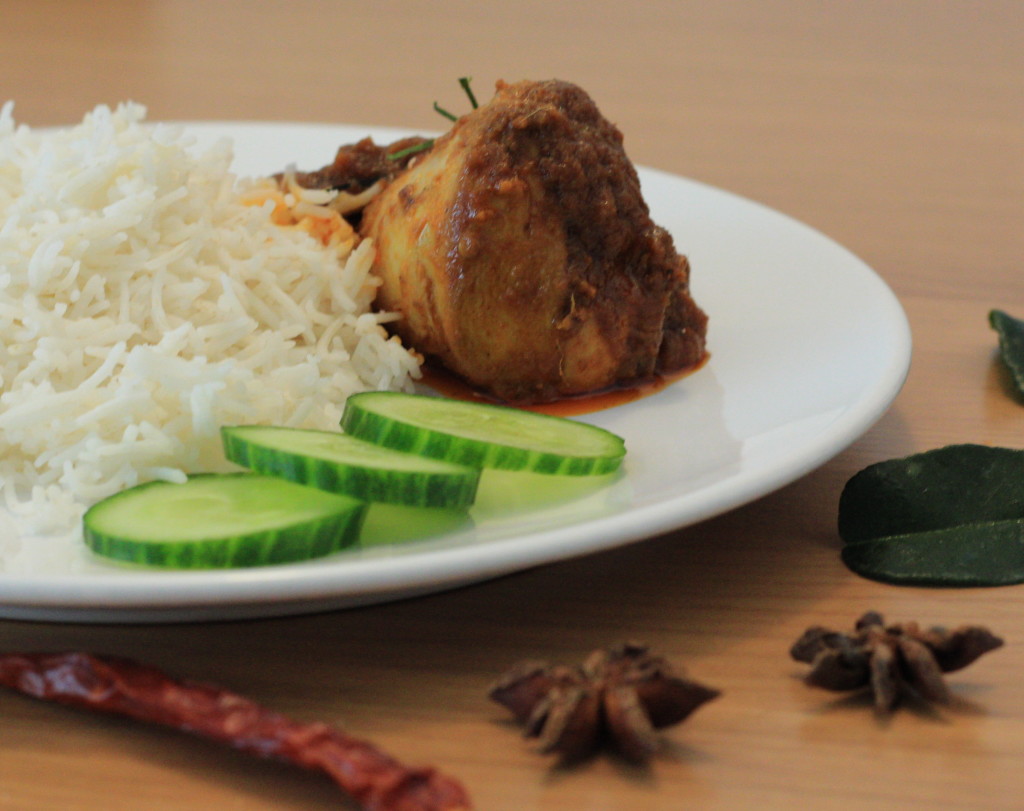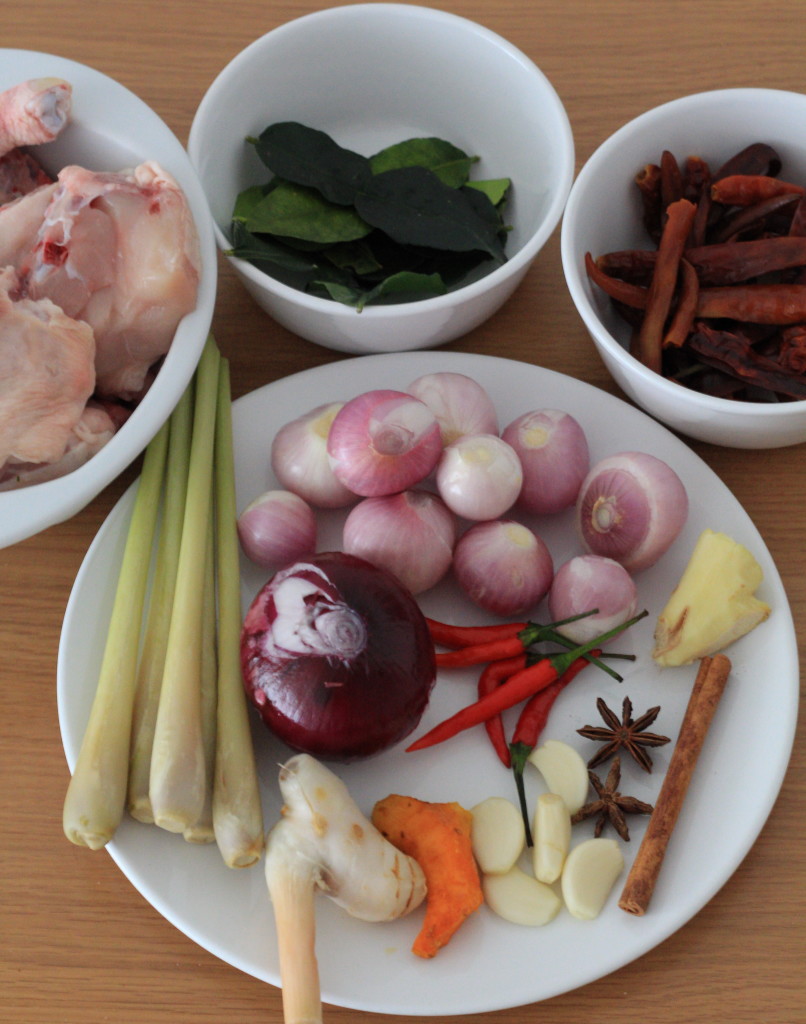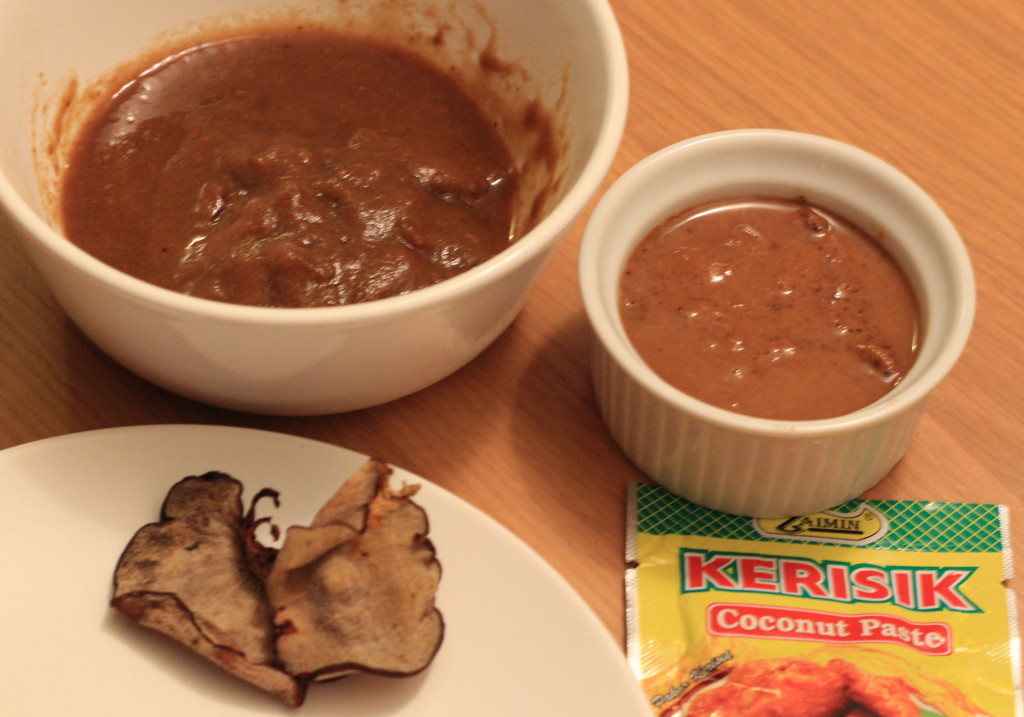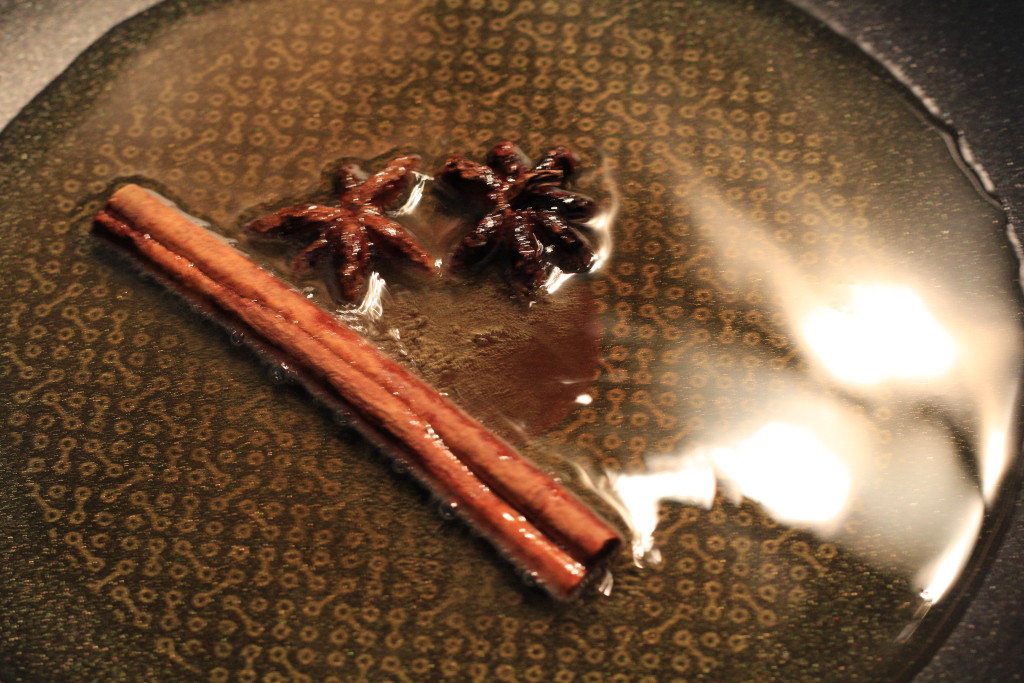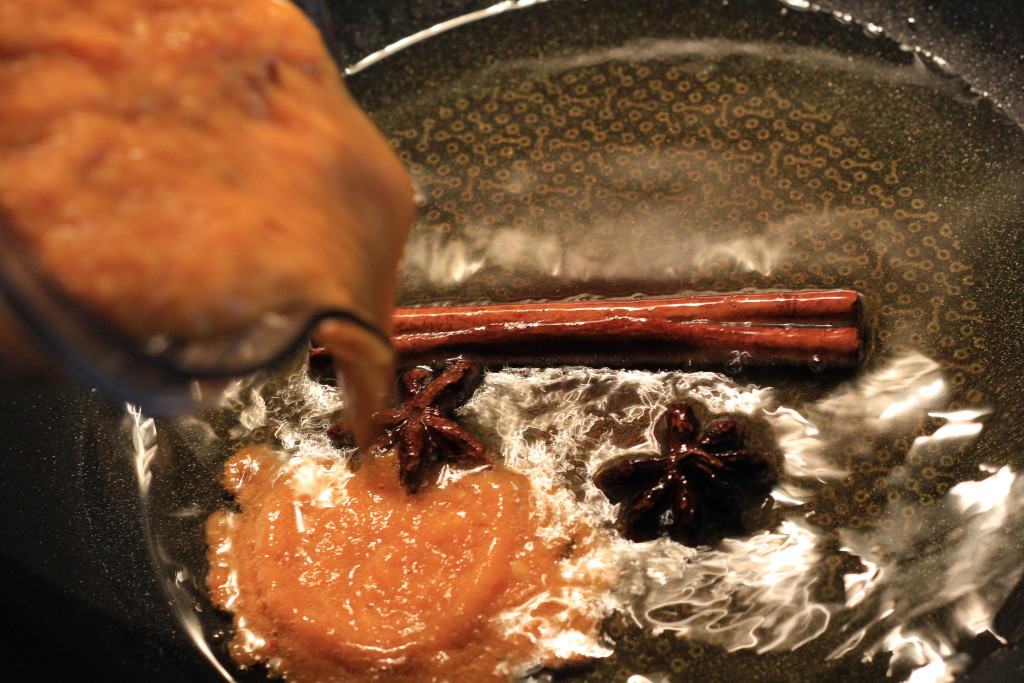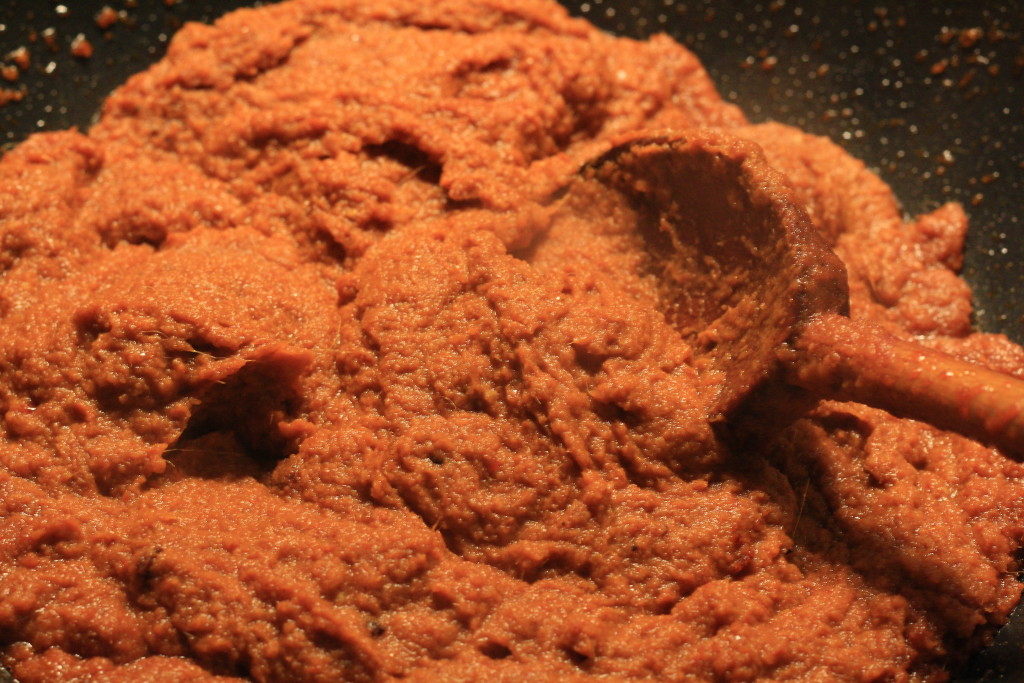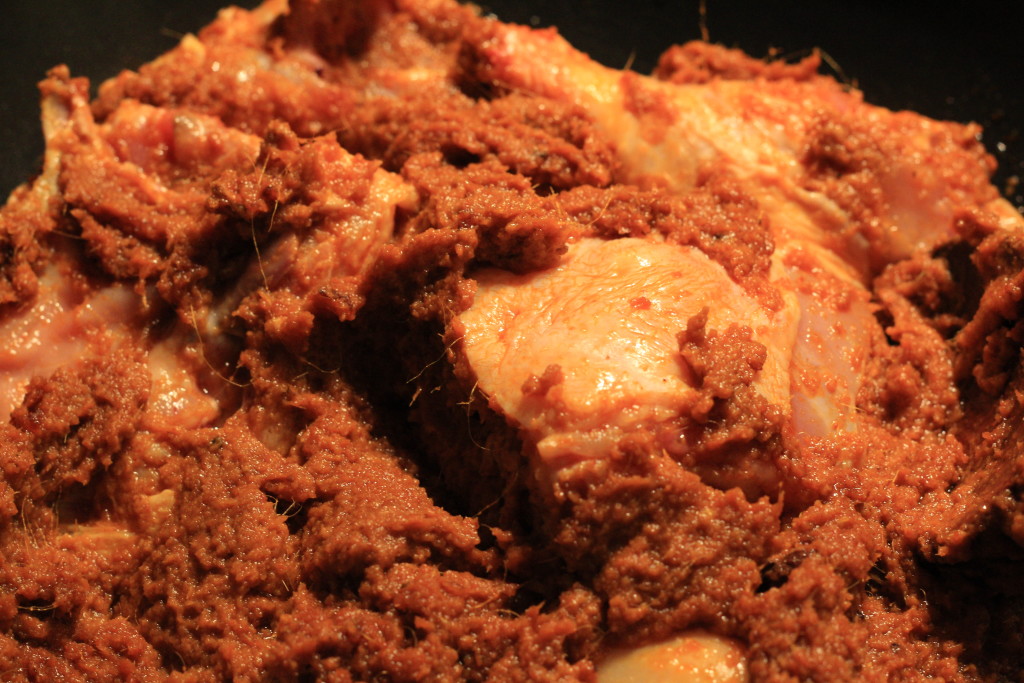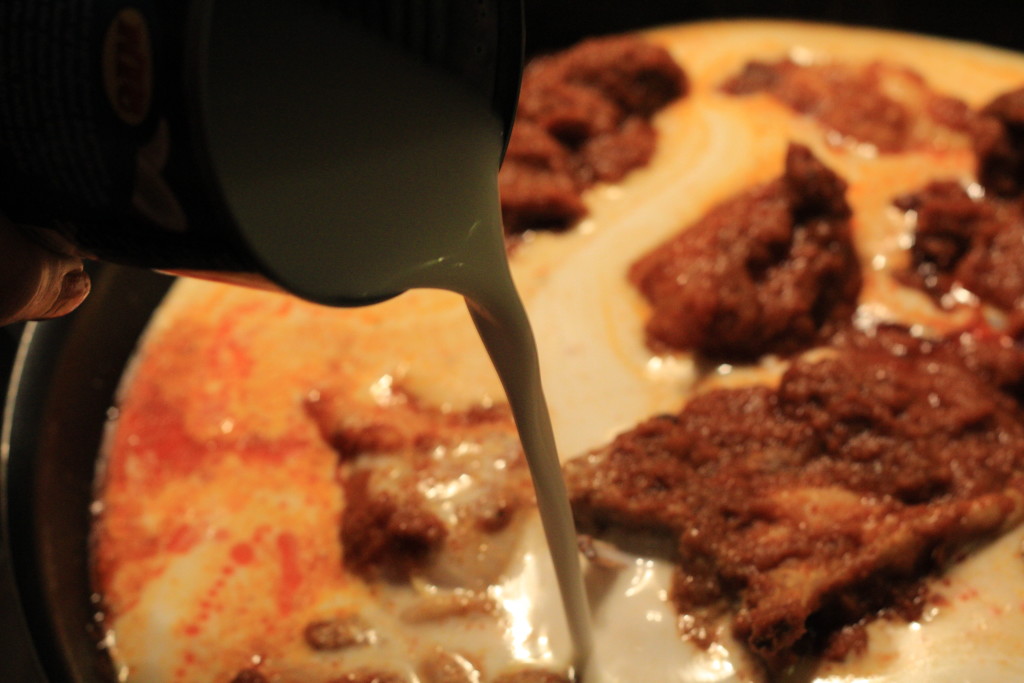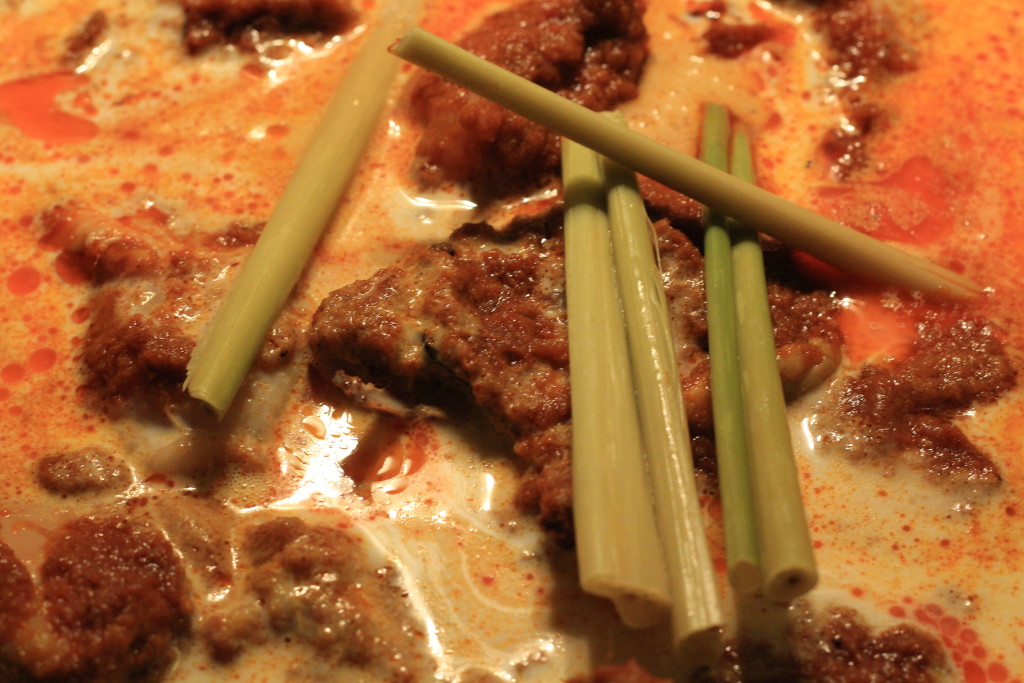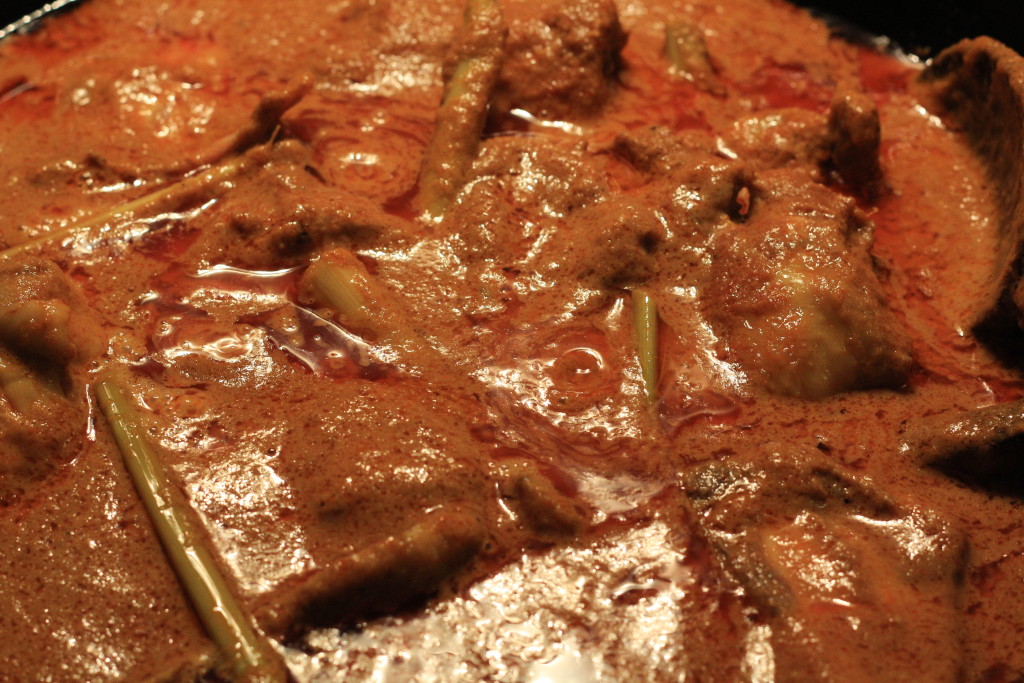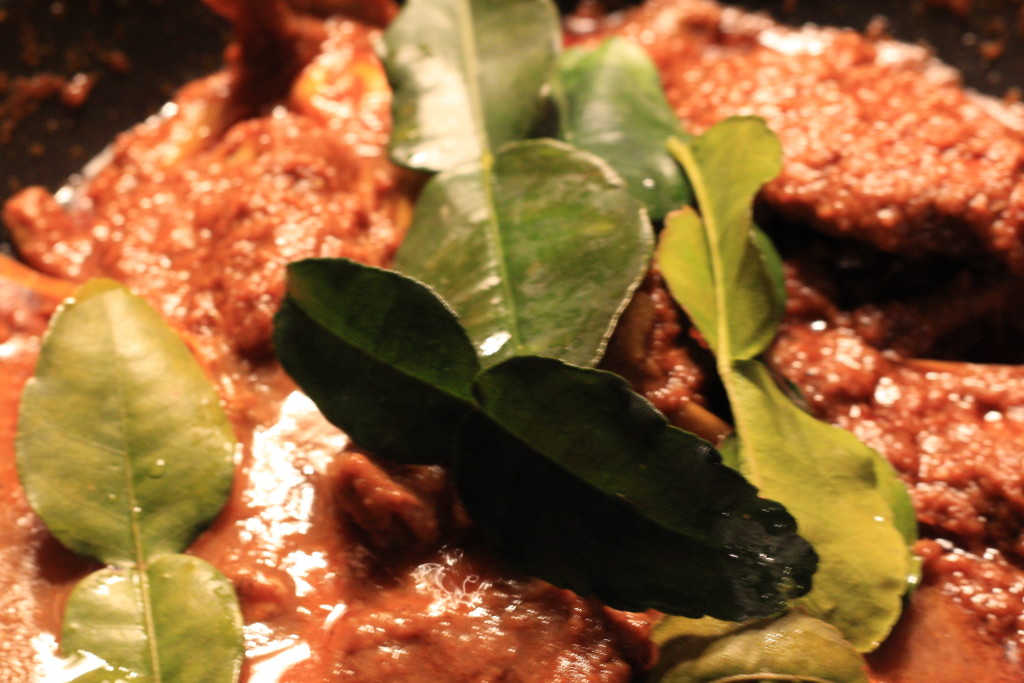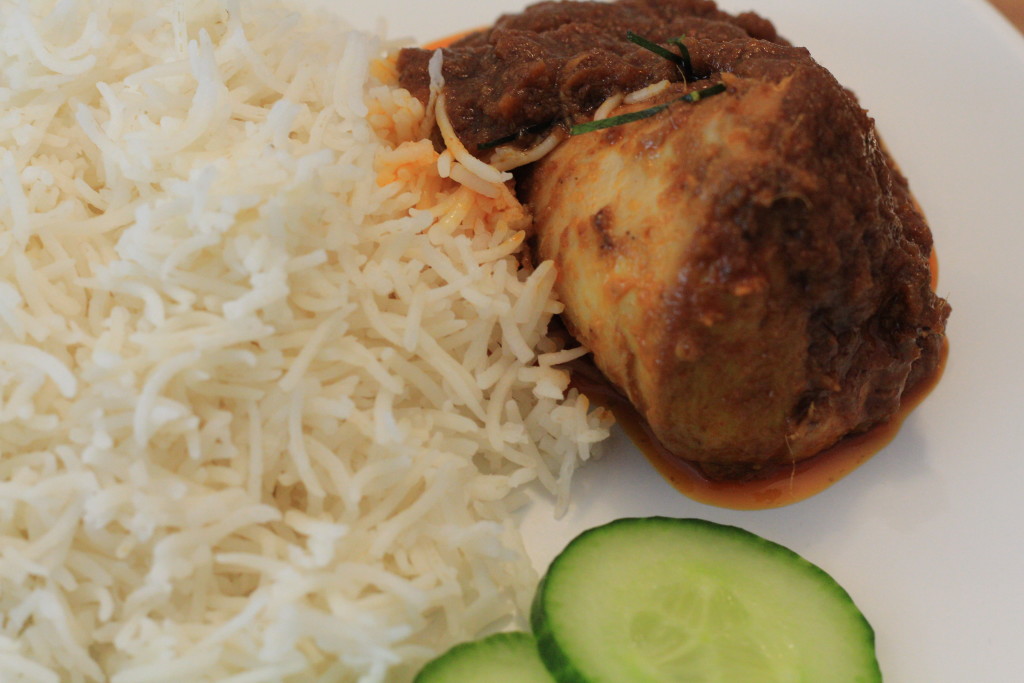Rendang is a must-have in our home on the first day of Eid, be it Eid-al-Fitr or Eid-al-Adha. My mom would start preparing rendang the day before as it takes a few hours to cook, something that no one wants to do on the morning of Eid. Nowadays, you can get instant rendang paste from many oriental stores – with the best-before-date stamped at the back of the packages. Needless to say, they’re never as good as the “real deal”.
With Eid-al-Adha just a few days away, I thought I’d make some chicken rendang. I’ve been invited to a friend’s place for Eid dinner. The rendang would be perfect to take along for sharing. I happen to have most of what’s needed anyway either from my own pantry, fridge or freezer. A quick trip to the halal butcher for chicken and I’m ready to cook.
Making rendang takes time but it’s not difficult and the end product is definitely worth it. Why don’t you give it a try?
You will need:
- 1 chicken, I cut mine into 12 pieces
- 1 cinnamon stick, optional
- 2 star anise, optional
- 1 tin (400ml) coconut milk; if you can get fresh coconut milk, use that!
- 1 chunk of tamarind, add water to make a paste
- 2 pieces of tamarind peel
- 5 kafir lime leaves
- Salt and sugar to taste
- Kerisik*
- Oil for frying
Blended (A):
- 10 shallots
- 1 onion
- 5 cloves garlic
- 1 inch ginger
- 2 inches galangal
- 1 inch turmeric, if you can’t get hold of fresh ones, substitute with 2 tsp of turmeric powder, in which case you don’t have to blend but add directly to the pan when frying the blended ingredients
- 5 lemongrass, the bottom white part only. Cut off the green part and bash them with the end of your knife. Put aside to be used later
- 15 dried chillies, soaked in warm water until re-hydrated
- 5 bird chillies for extra heat, optional
To make it:
Blend the ingredients listed under (A).
Heat oil in a large pan at medium to high heat. Throw in the cinnamon stick and star anise and fry for just a while – you don’t want to burn them.
Pour in blended ingredients (A).
Fry until fragrant and the paste thickens, stirring consistently – this may take approx 20 minutes.
Add the chicken, lightly stir a few times until the chicken pieces are coated in the rendang paste and cook until the chicken is semi-tender. Stir occasionally to avoid the bottom from sticking to the pan and getting burned. You can add a bit of water to loosen the paste slightly if needed.
Pour the coconut milk and throw in the bashed lemon grass (the green part).
Bring the gravy to a boil. Reduce the heat. Add salt and sugar to taste and continue to let it simmer on low heat until the the gravy reduces, the oil separates and the meat is cooked. If you find your chicken already cooked and starting to fall off the bone but the gravy has not reduced down, remove the chicken piece from the pan. You can add them back at the end of the process. As the gravy thickens, you will need to stir more often so as to avoid the bottom from sticking to the pan and burning. This process may take up to an hour.
When the gravy has reduced and the meat is cooked, add the tamarind paste, tamarind peel, kafir lime leaves and the magic ingredient that makes rendang a true rendang – the kerisik*.
Stir until well combined, have a taste and adjust it accordingly. Continue to cook for another 5 to 10 minutes. Turn off the heat.
Your rendang keeps well unrefrigerated for a few days if you remember to heat it up occasionally. You can of course refrigerate or even freeze it. The taste gets better overnight as time is given for the meat to marinate and absorb the spices. That is, if you can wait that long!
For Eid, we normally serve rendang with either ketupat or lemang – the former being rice cooked in coconut leaf casings that are intricately woven. Making the ketupat casings is an art on its own! Lemang on the other hand is glutenous rice cooked in bamboo. I can only dream of ketupat and lemang in London. Fortunately, rendang is versatile: you can eat it with a plate of hot steaming rice, sticky rice, as a side dish to nasi lemak or try eating it with your choice of crusty bread. That’s good too.
To all Muslims, Eid Mubarak.
*Kerisik:
I have instant kerisik in my pantry, so I’m taking the cheat way! (you can get instant kerisik from some well stocked oriental store).
To make kerisik, toast some grated coconut: fresh ones please, in a pan until golden brown. Grind/pound them until the oil comes out.
However, for some of us, I know it’s not easy to get fresh coconut, let alone freshly GRATED coconut. A solution is to add a bit of coconut milk to desiccated coconut and leave for a few minutes to plump up and turn into your so called “freshly grated coconut”. It’s not the same but better than nothing.
